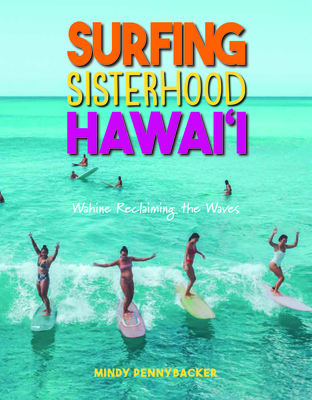But generations later, when I started paddling out to my neighborhood break off Diamond Head, I was often the only girl, and the boys blocked me and pushed me off waves, violating all the rules of etiquette that Uncle Shippy had taught me. Worse were the men in their 20s and older who tried to put the moves on me. They would usually back off when I gave them the stink eye and paddled away. But I remember one sunburned tourist who kept paddling after me until I yelled at him to get lost. “Wow,” he responded. “How’d you ever learn to speak such perfect English?” I am hapa, half Asian and half white, but in his eyes I was one of the brown-skinned, dark-haired Native girls who’d been objects of fantasy to outsiders since Europeans first arrived in Hawaii in 1778. Tourists still expected to find us speaking broken English, wearing grass skirts, living in grass huts. But not surfing. Go figure.
The backlash against women surfers took hold in the 1960s, after, ironically, popular books and Hollywood films about a California surfer girl named Gidget had launched the sport as a commercialized lifestyle trend, stoked by the music of the Beach Boys. Men muscled women aside, seizing control of surf contests, magazines, and sponsorship opportunities, and appropriating and revising surf history, stigmatizing women as weaker and less interesting to watch. A seminal 1966 documentary, The Endless Summer, glorified men from California on a round-the-world surf safari while relegating women to supporting positions in bikinis on the beach. California had claimed Hawaii’s endemic sport and narrowed it to exclude women, and was selling it back to us.
Men’s and women’s contests were held at different breaks. The most prestigious and mediagenic venues, such as the tubing waves at the surf break known as Banzai Pipeline and the giant Waimea Bay—both on Oahu’s North Shore—were deemed off-limits to women as too difficult and dangerous. This became a self-fulfilling prophecy, the women’s-surf-event organizer Betty Depolito points out, as women, lacking sponsorships and earning only a fraction of the prize money paid to men, and sometimes none at all, couldn’t afford to travel and invest the time to gain experience at these crowded, contentious breaks. “They say there aren’t enough women, but the reason why is women don’t get the opportunities,” Depolito told me.
